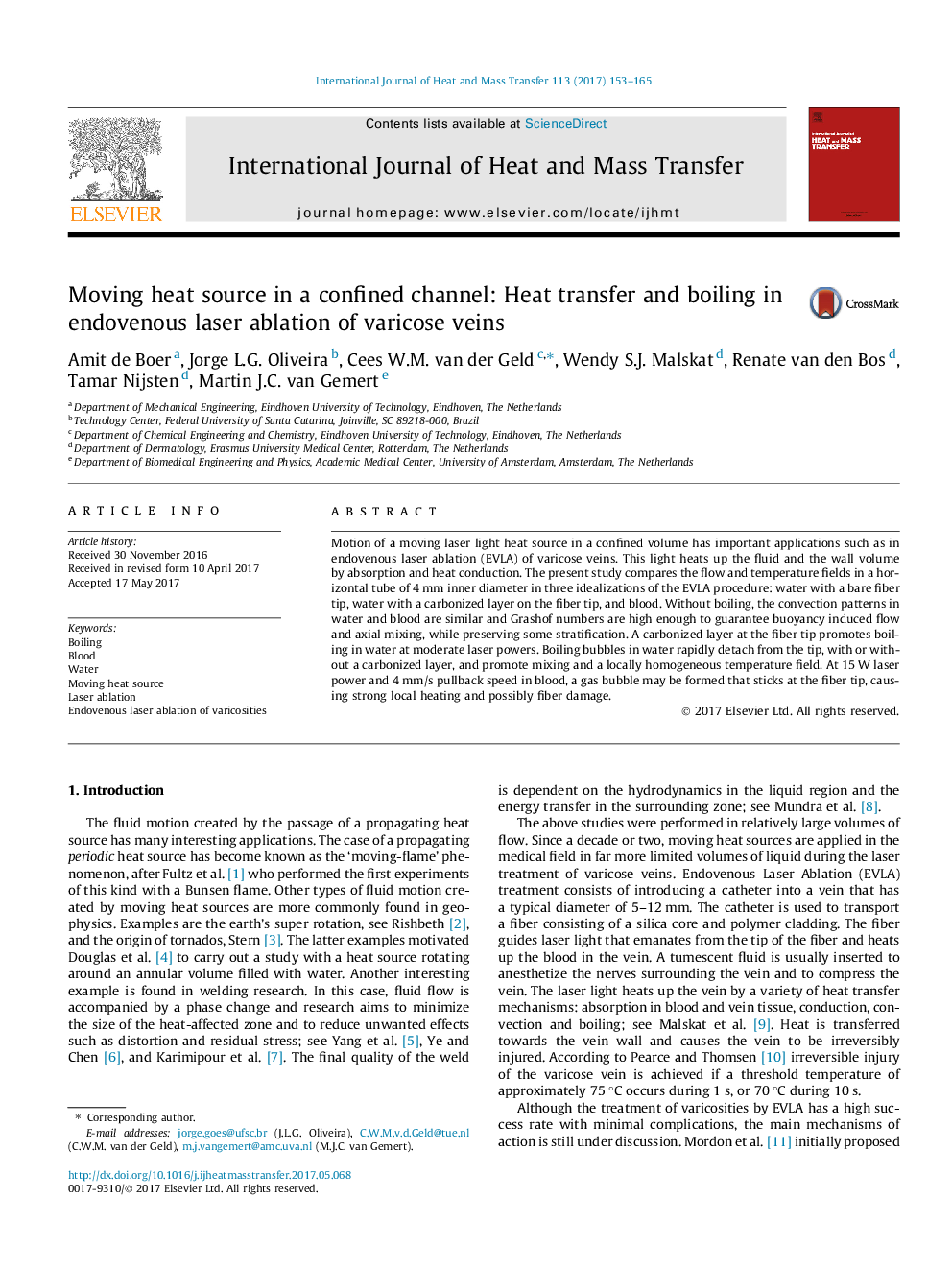| Article ID | Journal | Published Year | Pages | File Type |
|---|---|---|---|---|
| 4994163 | International Journal of Heat and Mass Transfer | 2017 | 13 Pages |
Abstract
Motion of a moving laser light heat source in a confined volume has important applications such as in endovenous laser ablation (EVLA) of varicose veins. This light heats up the fluid and the wall volume by absorption and heat conduction. The present study compares the flow and temperature fields in a horizontal tube of 4Â mm inner diameter in three idealizations of the EVLA procedure: water with a bare fiber tip, water with a carbonized layer on the fiber tip, and blood. Without boiling, the convection patterns in water and blood are similar and Grashof numbers are high enough to guarantee buoyancy induced flow and axial mixing, while preserving some stratification. A carbonized layer at the fiber tip promotes boiling in water at moderate laser powers. Boiling bubbles in water rapidly detach from the tip, with or without a carbonized layer, and promote mixing and a locally homogeneous temperature field. At 15Â W laser power and 4Â mm/s pullback speed in blood, a gas bubble may be formed that sticks at the fiber tip, causing strong local heating and possibly fiber damage.
Related Topics
Physical Sciences and Engineering
Chemical Engineering
Fluid Flow and Transfer Processes
Authors
Amit de Boer, Jorge L.G. Oliveira, Cees W.M. van der Geld, Wendy S.J. Malskat, Renate van den Bos, Tamar Nijsten, Martin J.C. van Gemert,
